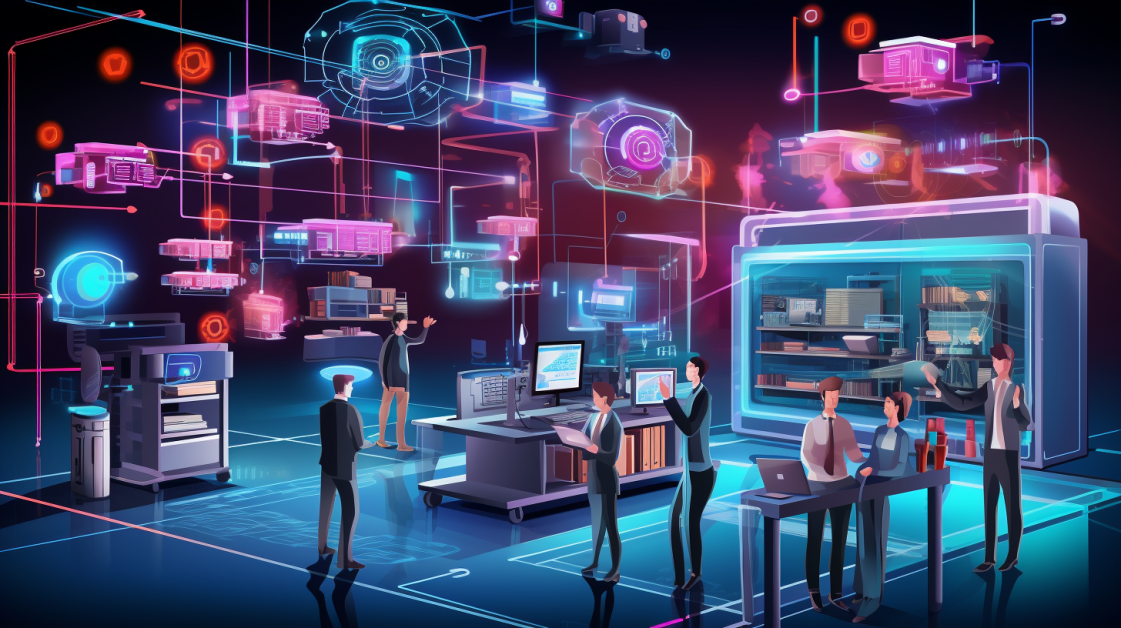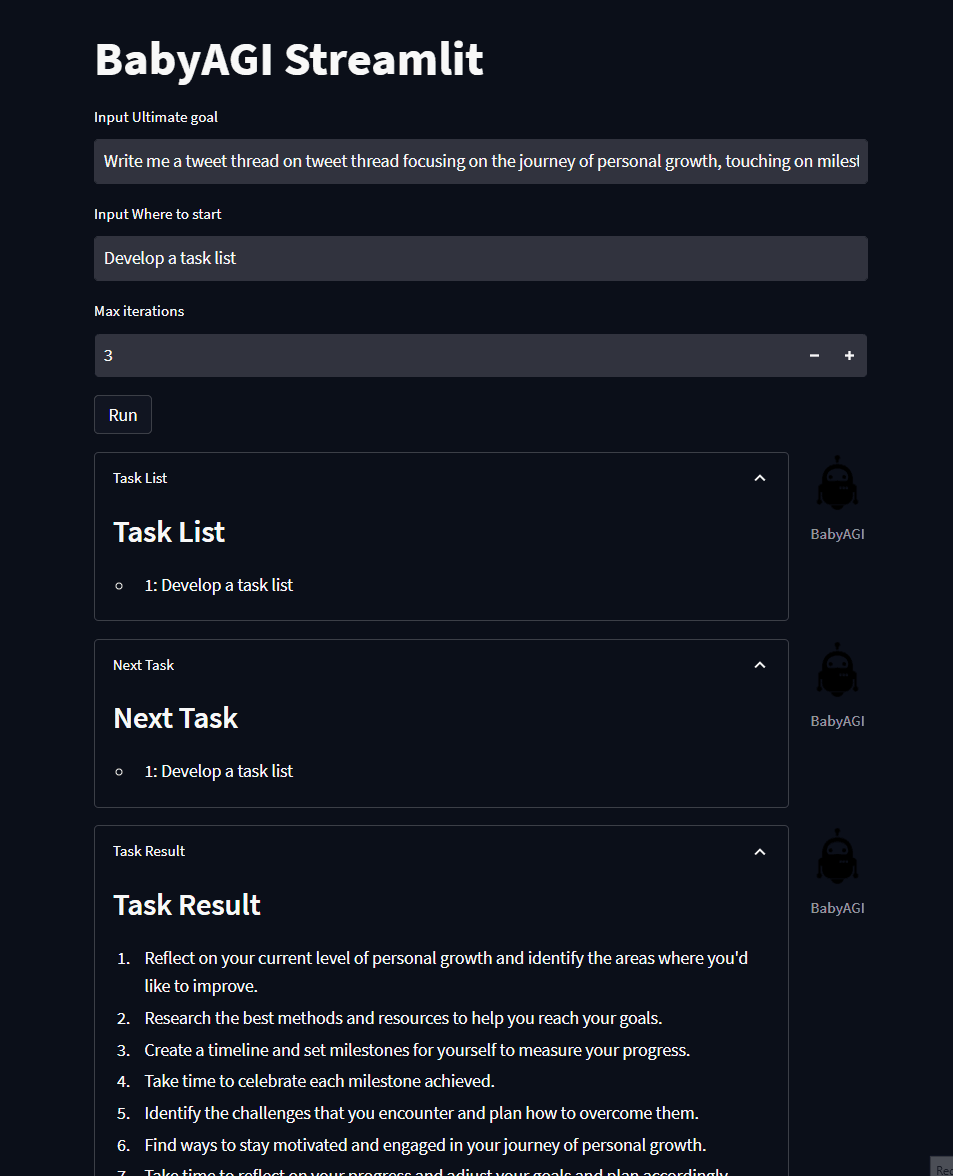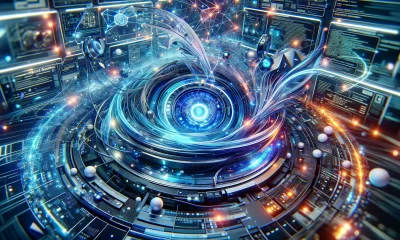AI Tools 101
Beyond ChatGPT; AI Agent: A New World of Workers

With advancements in deep learning, natural language processing (NLP), and AI, we are in a time period where AI agents could form a significant portion of the global workforce. These AI agents, transcending chatbots and voice assistants, are shaping a new paradigm for both industries and our daily lives. But what does it truly mean to live in a world augmented by these “workers”? This article dives deep into this evolving landscape, assessing the implications, potential, and challenges that lie ahead.
A Brief Recap: The Evolution of AI Workers
Before understanding the impending revolution, it's crucial to recognize the AI-driven evolution that has already occurred.
- Traditional Computing Systems: From basic computing algorithms, the journey began. These systems could solve pre-defined tasks using a fixed set of rules.
- Chatbots & Early Voice Assistants: As technology evolved, so did our interfaces. Tools like Siri, Cortana, and early chatbots simplified user-AI interaction but had limited comprehension and capability.
- Neural Networks & Deep Learning: Neural networks marked a turning point, mimicking human brain functions and evolving through experience. Deep learning techniques further enhanced this, enabling sophisticated image and speech recognition.
- Transformers and Advanced NLP Models: The introduction of transformer architectures revolutionized the NLP landscape. Systems like ChatGPT by OpenAI, BERT, and T5 have enabled breakthroughs in human-AI communication. With their profound grasp of language and context, these models can hold meaningful conversations, write content, and answer complex questions with unprecedented accuracy.
Enter the AI Agent: More Than Just a Conversation
Today's AI landscape is hinting at something more expansive than conversation tools. AI agents, beyond mere chat functions, can now perform tasks, learn from their environments, make decisions, and even exhibit creativity. They are not just answering questions; they are solving problems.
Traditional software models worked on a clear pathway. Stakeholders expressed a goal to software managers, who then designed a specific plan. Engineers would execute this plan through lines of code. This ‘legacy paradigm' of software functionality was clear-cut, involving a plethora of human interventions.
AI agents, however, operate differently. An agent:
- Has goals it seeks to achieve.
- Can interact with its environment.
- Formulates a plan based on these observations to achieve its goal.
- Takes necessary actions, adjusting its approach based on the environment's changing state.
What truly distinguishes AI agents from traditional models is their ability to autonomously create a step-by-step plan to realize a goal. In essence, while earlier the programmer provided the plan, today's AI agents chart their course.
Consider an everyday example. In traditional software design, a program would notify users about overdue tasks based on pre-determined conditions. The developers would set these conditions based on specifications provided by the product manager.
In the AI agent paradigm, the agent itself determines when and how to notify the user. It gauges the environment (user's habits, application state) and decides the best course of action. The process thus becomes more dynamic, more in the moment.
ChatGPT marked a departure from its traditional use with the integration of plugins, thereby allowing it to harness external tools to perform multiple requests. It became an early manifestation of the agent concept. If we consider a simple example: a user inquiring about New York City's weather, ChatGPT, leveraging plugins, could interact with an external weather API, interpret the data, and even course-correct based on the responses received.
AI agents, including Auto-GPT, AgentGPT, and BabyAGI, are heralding a new era in the expansive AI universe. While ChatGPT popularized Generative AI by requiring human input, the vision behind AI agents is to enable AIs to function independently, steering towards objectives with little to no human interference. This transformative potential has been underscored by Auto-GPT's meteoric rise, garnering over 107,000 stars on GitHub within just six weeks of its inception, an unprecedented growth compared to established projects like the data science package ‘pandas'.
AI Agents vs. ChatGPT
Many advanced AI agents, such as Auto-GPT and BabyAGI, utilize the GPT architecture. Their primary focus is to minimize the need for human intervention in AI task completion. Descriptive terms like “GPT on a loop” characterize the operation of models like AgentGPT and BabyAGI. They operate in iterative cycles to better understand user requests and refine their outputs. Meanwhile, Auto-GPT pushes the boundaries further by incorporating internet access and code execution capabilities, significantly widening its problem-solving reach.
Innovations in AI Agents
- Long-term Memory: Traditional LLMs have a limited memory, retaining only the recent segments of interactions. For comprehensive tasks, recalling the entire conversation or even previous ones becomes pivotal. To surmount this, AI agents have adopted embedding workflows, converting textual conversations into numeric arrays, offering a solution to memory constraints.
- Web-browsing Abilities: To stay updated with recent events, Auto-GPT has been armed with browsing capabilities, using the Google Search API. This has drawn debates within the AI community regarding the scope of an AI's knowledge.
- Running Code: Beyond generating code, Auto-GPT can execute both shell and Python codes. This unprecedented capability allows it to interface with other software, thereby broadening its operational domain.
The diagram visualizes the architecture of an AI system powered by a Large Language Model and Agents.
- Inputs: The system receives data from diverse sources: direct user commands, structured databases, web content, and real-time environmental sensors.
- LLM & Agents: At the core, the LLM processes these inputs, collaborating with specialized agents like
Auto-GPTfor thought chaining,AgentGPTfor web-specific tasks,BabyAGIfor task-specific actions, andHuggingGPTfor team-based processing. - Outputs: Once processed, the information is transformed into a user-friendly format and then relayed to devices that can act upon or influence the external surroundings.
- Memory Components: The system retains information, both on a temporary and permanent basis, through short-term caches and long-term databases.
- Environment: This is the external realm, which affects the sensors and is impacted by the system's actions.
Advanced AI Agents: Auto-GPT, BabyAGI and more
AutoGPT and AgentGPT
AutoGPT, a brainchild released on GitHub in March 2023, is an ingenious Python-based application that harnesses the power of GPT, OpenAI's transformative generative model. What distinguishes Auto-GPT from its predecessors is its autonomy – it's designed to undertake tasks with minimal human guidance and has the unique ability to self-initiate prompts. Users simply need to define an overarching objective, and Auto-GPT crafts the required prompts to achieve that end, making it a potentially revolutionary leap toward true artificial general intelligence (AGI).
With features that span internet connectivity, memory management, and file storage capabilities using GPT-3.5, this tool is adept at handling a broad spectrum of tasks, from conventional ones like email composition to intricate tasks that would typically require a lot more human involvement.
On the other hand, AgentGPT, also built on the GPT framework, is a user-centric interface that doesn't require extensive coding expertise to set up and use. AgentGPT allow users to define AI goals, which it then dissects into manageable tasks.
Furthermore, AgentGPT stands out for its versatility. It's not limited to creating chatbots. The platform extends its capabilities to create diverse applications like Discord bots and even integrates seamlessly with Auto-GPT. This approach ensures that even those without an extensive coding background can do task such as fully autonomous coding, text generation, language translation, and problem-solving.
LangChain is a framework that bridges Large Language Models (LLMs) with various tools and utilizes agents, often perceived as ‘Bots', to determine and execute specific tasks by choosing the appropriate tool. These agents seamlessly integrate with external resources, while a vector database in LangChain stores unstructured data, facilitating rapid information retrieval for LLMs.
BabyAGI
Then, there's BabyAGI, a simplified yet powerful agent. To understand BabyAGI's capabilities, imagine a digital project manager that autonomously creates, organizes, and executes tasks with a sharp focus on given objectives. While most AI-driven platforms are bounded by their pre-trained knowledge, BabyAGI stands out for its ability to adapt and learn from experiences. It holds a profound capability to discern feedback and, like humans, base decisions on trial and error.
Notably, the underlying strength of BabyAGI isn't just its adaptability but also its proficiency in running code for specific objectives. It shines in complex domains, such as cryptocurrency trading, robotics, and autonomous driving, making it a versatile tool in a plethora of applications.

https://yoheinakajima.com/task-driven-autonomous-agent-utilizing-gpt-4-pinecone-and-langchain-for-diverse-applications/
The process can be categorized into three agents:
- Execution Agent: The heart of the system, this agent leverages OpenAI’s API for task processing. Given an objective and a task, it prompts OpenAI's API and retrieves task outcomes.
- Task Creation Agent: This function creates fresh tasks based on earlier results and current objectives. A prompt is sent to OpenAI’s API, which then returns potential tasks, organized as a list of dictionaries.
- Task Prioritization Agent: The final phase involves sequencing the tasks based on priority. This agent uses OpenAI’s API to re-order tasks ensuring that the most critical ones get executed first.
In collaboration with OpenAI's language model, BabyAGI leverages the capabilities of Pinecone for context-centric task results storage and retrieval.
Below is a demonstration of the BabyAGI using this link.
To begin, you will need a valid OpenAPI key. For ease of access, the UI has a settings section where the OpenAPI key can be entered. Additionally, if you're looking to manage costs, remember to set a limit on the number of iterations.
Once I had the application configured, I did a small experiment. I posted a prompt to BabyAGI: “Craft a concise tweet thread focusing on the journey of personal growth, touching on milestones, challenges, and the transformative power of continuous learning.”
BabyAGI responded with a well-thought-out plan. It wasn't just a generic template but a comprehensive roadmap that indicated that the underlying AI had indeed understood the nuances of the request.
Deepnote AI Copilot
Deepnote AI Copilot reshapes the dynamics of data exploration in notebooks. But what sets it apart?
At its core, Deepnote AI aims to augment the workflow of data scientists. The moment you provide a rudimentary instruction, the AI springs into action, devising strategies, executing SQL queries, visualizing data using Python, and presenting its findings in an articulate manner.
One of Deepnote AI's strengths is its comprehensive grasp of your workspace. By understanding integration schemas and file systems, it aligns its execution plans perfectly with the organizational context, ensuring its insights are always relevant.
The AI’s integration with notebook mediums creates a unique feedback loop. It actively assesses code outputs, making it adept at self-correction and ensuring results are consistent with set objectives.
Deepnote AI stands out for its transparent operations, providing clear insights into its processes. The intertwining of code and outputs ensures its actions are always accountable and reproducible.
CAMEL
CAMEL is a framework that seeks to foster collaboration among AI agents, aiming for efficient task completion with minimal human oversight.
It divides its operations into two main agent types:
- The AI User Agent lays out instructions.
- The AI Assistant Agent executes tasks based on the provided directives.
One of CAMEL's aspirations is to unravel the intricacies of AI thought processes, aiming to optimize the synergies between multiple agents. With features like role-playing and inception prompting, it ensures AI tasks align seamlessly with human objectives.
Westworld Simulation: Life into AI
Derived from inspirations like Unity software and adapted in Python, the Westworld simulation is a leap into simulating and optimizing environments where multiple AI agents interact, almost like a digital society.
These agents aren't just digital entities. They simulate believable human behaviors, from daily routines to complex social interactions. Their architecture extends a large language model to store experiences, reflect on them, and employ them for dynamic behavior planning.
Westworld's interactive sandbox environment, reminiscent of The Sims, brings to life a town populated by generative agents. Here, users can interact, watch, and guide these agents through their day, observing emergent behaviors and complex social dynamics.
Westworld simulation exemplifies the harmonious fusion of computational prowess and human-like intricacies. By melding vast language models with dynamic agent simulations, it charts a path toward crafting AI experiences that are strikingly indistinguishable from reality.
Conclusion
AI agents can be incredibly versatile and they are shaping industries, altering workflows, and enabling feats that once seemed impossible. But like all groundbreaking innovations, they're not without their imperfections.
While they have the power to reshape the very fabric of our digital existence, these agents still grapple with certain challenges, some of which are innately human, such as understanding context in nuanced scenarios or tackling issues that lie outside their trained datasets.
In the next article, we will delve deeper into AutoGPT and GPT Engineer, examining how to set up and use them. Additionally, we will explore the reasons these AI agents occasionally falter, such as getting trapped in loops, among other issues. So stay tuned!




















